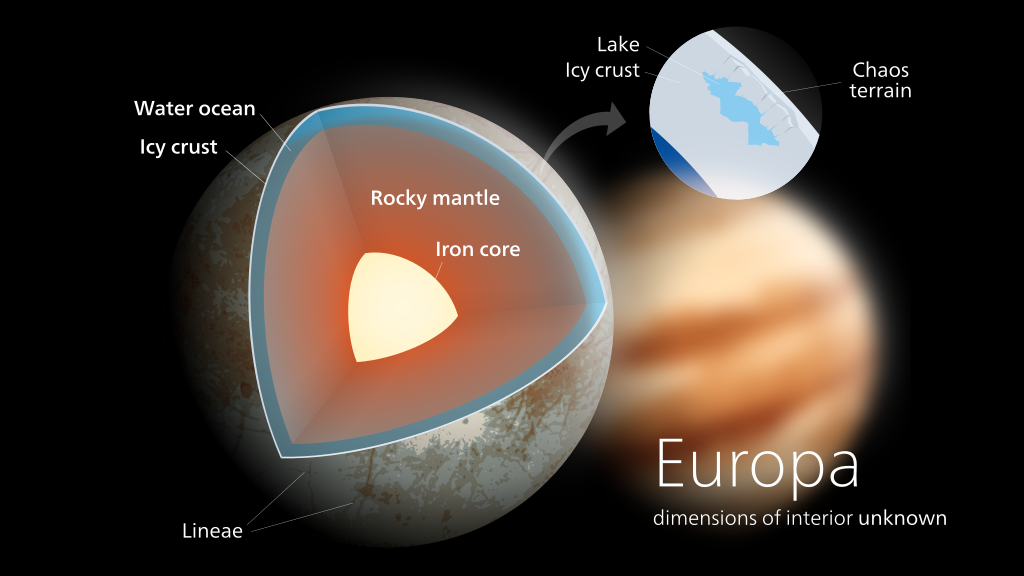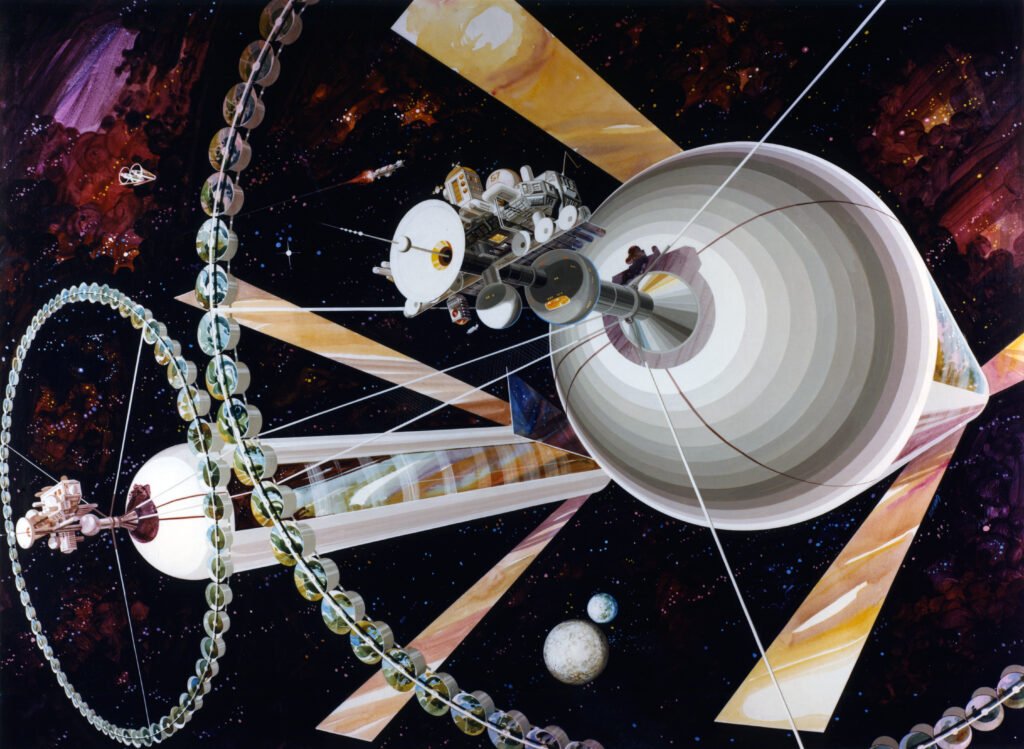Under a crust of fractured ice, Europa may shelter the largest body of liquid water in the solar system – more than Earth’s oceans combined – and that single fact has gripped scientists for decades. The mystery isn’t just whether water is there, but whether the chemistry and energy to power life have persisted in the dark for billions of years. NASA’s Europa Clipper, launched on October 14, 2024 and scheduled for a precision Mars flyby in March 2025, is now threading a gravity-assist path that will drop it into Jupiter’s realm in April 2030 to ask those questions head on. What we learn could redefine habitability far beyond Mars, pointing to ocean worlds as the likeliest havens for biology in our cosmic backyard. I remember the first time I saw Jupiter through a backyard telescope; Europa looked like a pinprick – but its story now feels anything but small. The countdown to answers has already begun.
The Hidden Clues
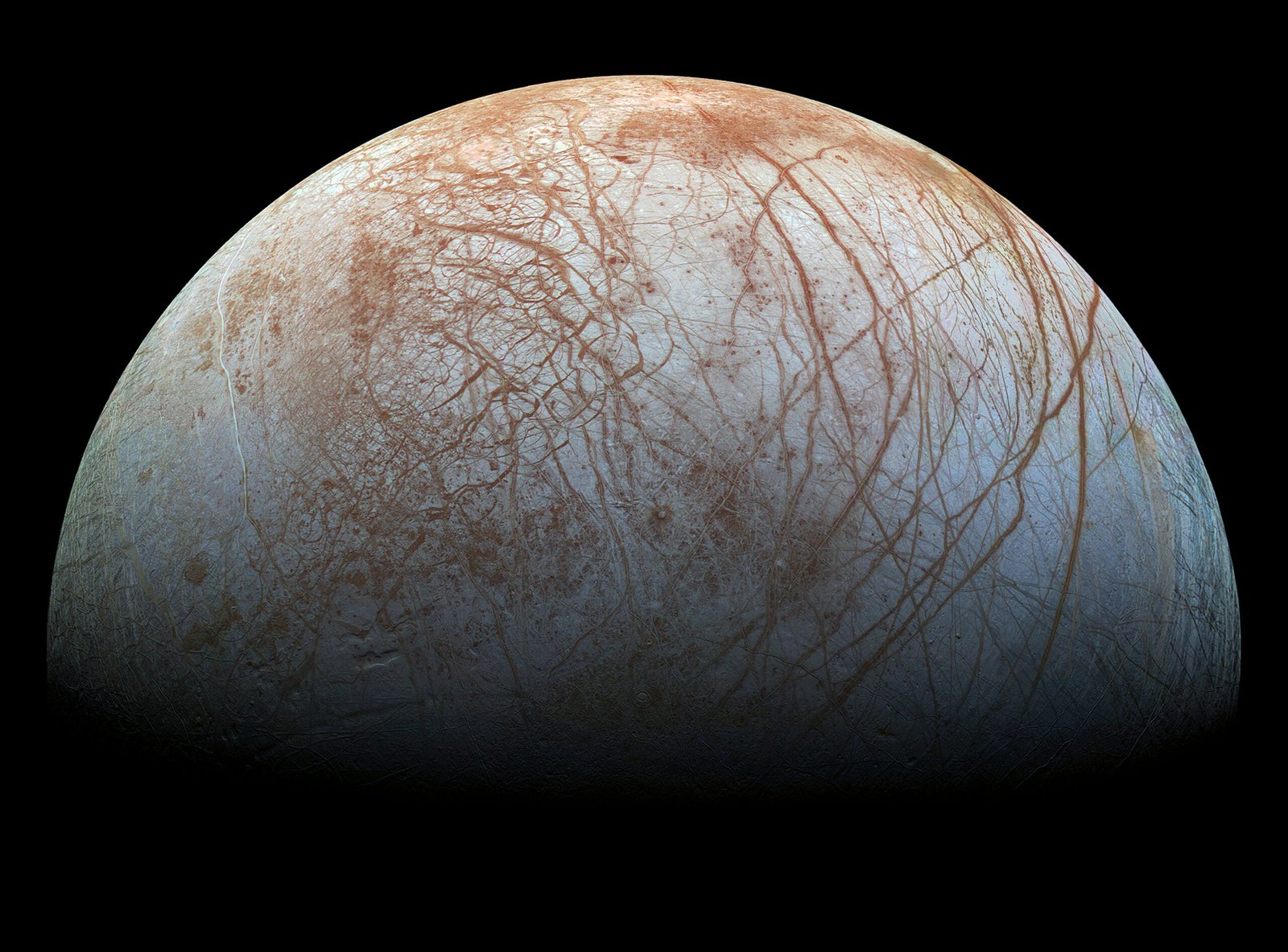
For all the poetry in its name, Europa’s case for an ocean is unromantic and empirical: a conductive layer beneath the ice induces a magnetic signal as Jupiter’s field sweeps past, a phenomenon Galileo’s magnetometer first captured and that later analyses cemented as the signature of a salty global sea. The surface adds circumstantial evidence – youthful, crater-poor plains scored by migrating ridges and bands that look like the aftermath of a world repeatedly warmed and cracked from below. Hubble has intermittently spotted plume-like features over the same region in 2014 and 2016, hinting that internal water occasionally vents skyward, though the plume story remains a cautious one. Meanwhile, the James Webb Space Telescope mapped carbon dioxide concentrated at Tara Regio, a geologically young chaos terrain, strongly suggesting the carbon is sourced from within rather than sprinkled by space debris. Each line of evidence on its own is suggestive; together, they read like chapters of the same ocean narrative. The remaining plot twist – how the surface and the sea exchange material – is exactly what Europa Clipper is built to untangle.
From Ancient Tools to Modern Science
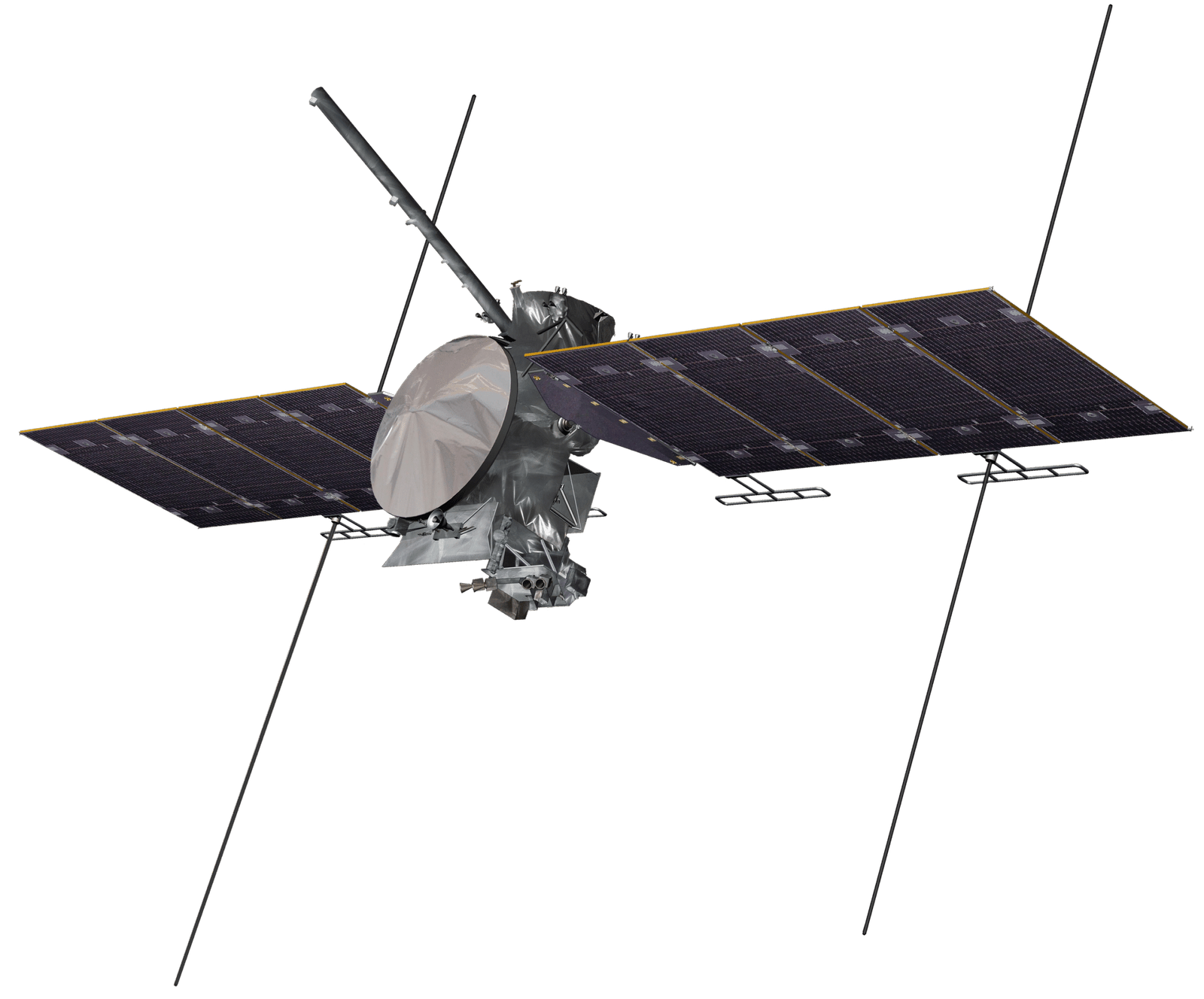
Europa’s story begins with a telescope in 1610, when Galileo revealed Jupiter’s four bright satellites and quietly shifted humanity’s place in the universe. Four centuries later, we’ve traded brass optics for a fleet of specialized instruments tuned to Europa’s specific riddles. Europa Clipper’s ice-penetrating radar, REASON, will fire dual-frequency radio waves to sound as deep as roughly thirty kilometers through the crust, searching for internal lakes and the ice-ocean interface. A magnetometer suite and the Plasma Instrument for Magnetic Sounding will isolate Europa’s induced field from Jupiter’s plasma haze to estimate ocean depth, salinity, and the thickness of the ice. Add to that high-resolution imaging, thermal mapping, an ultraviolet spectrograph, a mass spectrometer for gases, and a dust analyzer for ice grains lofted off the surface, and you have a cross-checking system designed to turn hints into constraints. It’s a leap from seeing a bright dot to diagnosing a world’s interior – one instrument at a time.
A World Built by Tides

Europa doesn’t rely on sunlight to keep its ocean liquid; the real engine is gravity. As the moon’s slightly elongated orbit hauls it closer to and farther from Jupiter, the entire interior flexes, and that mechanical kneading dissipates as heat – much like warming a paperclip by bending it. Models suggest a shell potentially ten to fifteen miles thick riding atop a sea forty to one hundred miles deep, with the combined volume tallying to roughly twice all of Earth’s oceans. The seafloor may be in direct contact with rock, which matters because water-rock interactions can fuel hydrothermal systems and deliver energy-rich chemistry into the ocean. Europa’s surface, meanwhile, is blasted by radiation that produces oxidants and other reactive compounds; if those oxidants percolate downward through cracks or briny conduits, they could supply a slow but steady chemical diet. Picture a planetary-scale battery: tidal heating on the bottom, oxidants filtering from the top, and a salty ocean sandwiched between.
What Juno Saw Up Close
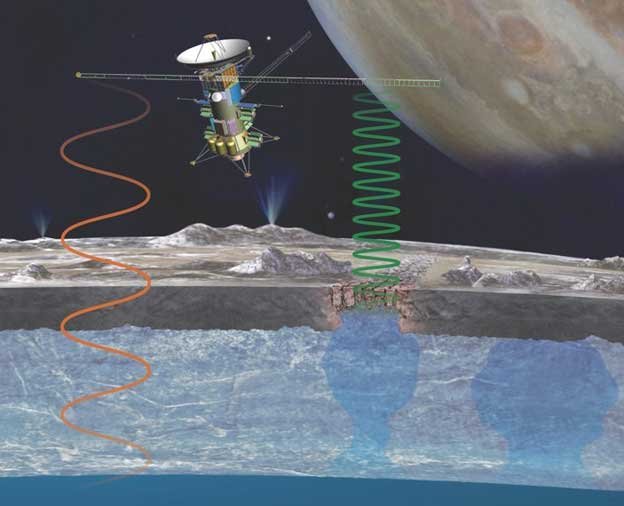
Before Clipper arrives, NASA’s Juno has already given us a taste of Europa’s complexity. During a 2022 skim just a few hundred miles above the surface, Juno’s cameras recorded razor-sharp views of double ridges, scarp-walled depressions, and dark stains that could mark briny eruptions frozen in place. The textures evoke a landscape where ice shifts, refreezes, and fractures in a cycle of slow-motion tectonics, perhaps even relocating the ice shell over geologic time. Some imagery hints at areas where disrupted ice may have recently moved or vented, the kinds of targets future flybys will prioritize. These snapshots aren’t proof of plumes or present-day activity, but they recalibrate expectations: Europa is not a static cue ball; it’s a restless, engineered lattice of ice responding to forces from within. Juno’s reconnaissance helps set the stage for where Clipper’s instruments will aim most intently.
Chemistry on the Ice
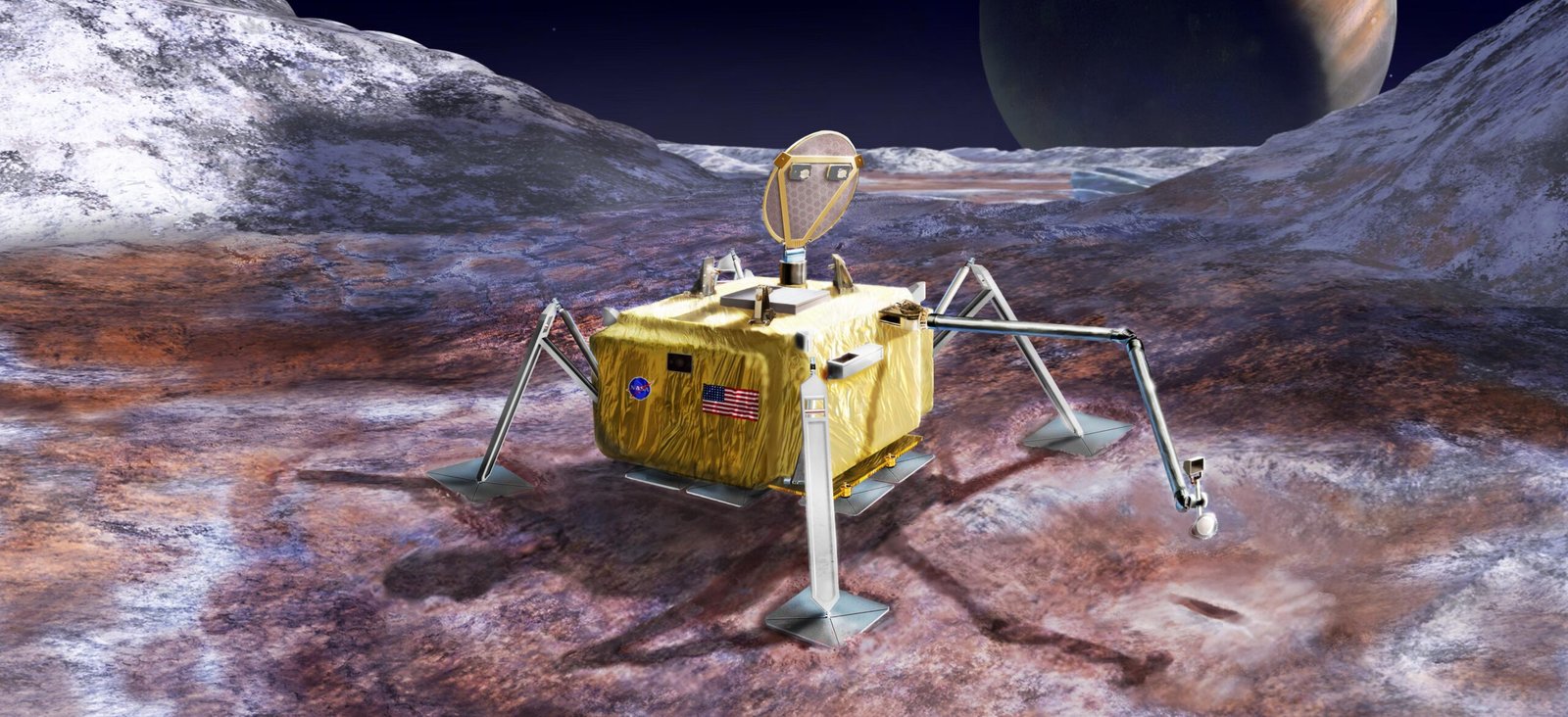
If life is a recipe, Europa seems to stock the pantry. JWST’s detection of surface carbon dioxide concentrated at young chaos terrains strongly implies internal sourcing, adding carbon to a list that already includes salts such as sodium chloride observed at Tara Regio. Europa Clipper will hunt for volatile gases and trace organics in the moon’s whisper-thin atmosphere with its mass spectrometer, while the dust analyzer samples tiny ice grains lofted from the surface to infer what’s embedded in the ice. Thermal imaging will map warm anomalies that could betray subsurface water pockets or recent resurfacing, and ultraviolet observations will scan for faint auroras or tenuous plumes. The payoff is not a single smoking gun but a mosaic: temperature, chemistry, texture, and structure, all stitched across forty-nine planned flybys after arrival in 2030. With each pass, the uncertainties about Europa’s habitability should narrow.
Why It Matters
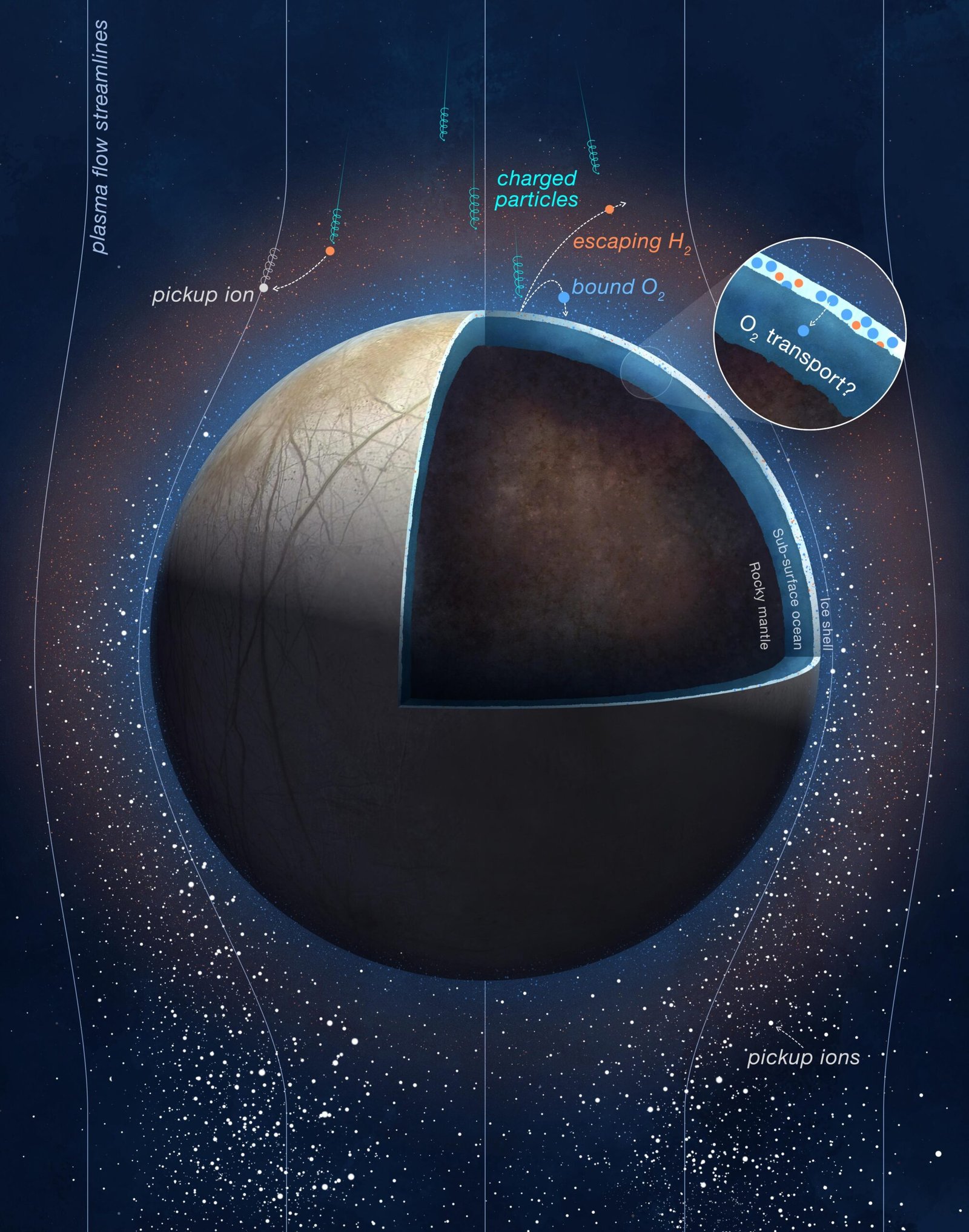
Europa challenges the Mars-first mindset by suggesting that the most Earthlike ecosystems might hide in oceans, not deserts. Unlike surface astrobiology, where ultraviolet rays and oxidants strip organics, Europa’s ocean could be shielded by miles of ice, preserving chemistry long enough for complexity to emerge. The mission’s mandate is sober – assess habitability rather than detect life – but the implications are sweeping: if an ocean world around a gas giant is viable for biology, then similar moons around the countless giant exoplanets we’ve cataloged may be common abodes for life. It’s also a test of method, marrying noninvasive geophysics with sniff-and-sample techniques to read a planet without landing on it. Even a null result, tightly constrained, tells us which ocean worlds to prioritize next and how to design the first lander or melt probe. In that sense, Europa is both a destination and a measuring stick for life elsewhere.
The Future Landscape

The next decade belongs to paired reconnaissance: NASA’s Europa Clipper and Europe’s JUICE, arriving at Jupiter in 2030 and 2031, respectively, to survey the system from complementary angles. Clipper will endure Jupiter’s radiation in a looping orbit while stacking targeted Europa passes; JUICE will broaden the context across multiple moons before settling at Ganymede. The technical challenges are formidable – radiation-hardened electronics, precision navigation for low-altitude flybys, and radar soundings through rough, salty ice – but the architecture is mature, and hardware is already deployed and being checked out during cruise. If evidence points to accessible water pockets or recurring vents, the community’s next step will be a dedicated lander or plume-sampling mission that can directly test for complex organics and isotopic patterns. Realistically, sample return from Europa is a generational project, yet each constraint we gather now reduces risk and cost for whatever comes next. Step by step, a global blueprint for exploring ocean worlds is taking shape.
Conclusion
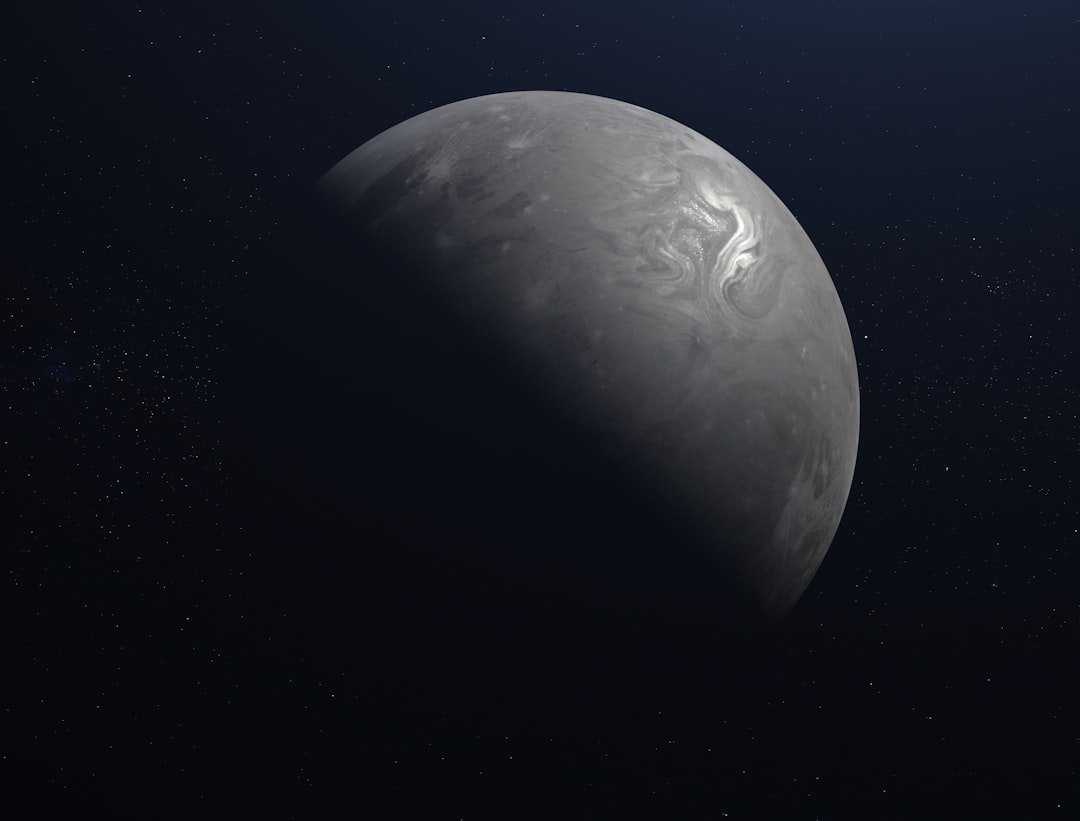
There’s a simple way to participate in this long, careful experiment: stay curious and stay current. Follow Europa Clipper’s cruise milestones and instrument checkouts, then mark April 2030 for Jupiter arrival; the mission team will release images, maps, and data visualizations the public can explore alongside researchers. Educators can weave Europa into lessons about energy, chemistry, and Earth’s own polar oceans; local science centers and planetariums often host mission events that bring the engineering and science to life. If you’re hands-on, dig into NASA’s publicly shared datasets and visualization tools to build your own maps or models once the flybys begin. And yes, talk about Europa – at dinner tables, in classrooms, on hiking trails – because big discoveries usually start as small conversations that don’t let go.

Suhail Ahmed is a passionate digital professional and nature enthusiast with over 8 years of experience in content strategy, SEO, web development, and digital operations. Alongside his freelance journey, Suhail actively contributes to nature and wildlife platforms like Discover Wildlife, where he channels his curiosity for the planet into engaging, educational storytelling.
With a strong background in managing digital ecosystems — from ecommerce stores and WordPress websites to social media and automation — Suhail merges technical precision with creative insight. His content reflects a rare balance: SEO-friendly yet deeply human, data-informed yet emotionally resonant.
Driven by a love for discovery and storytelling, Suhail believes in using digital platforms to amplify causes that matter — especially those protecting Earth’s biodiversity and inspiring sustainable living. Whether he’s managing online projects or crafting wildlife content, his goal remains the same: to inform, inspire, and leave a positive digital footprint.

